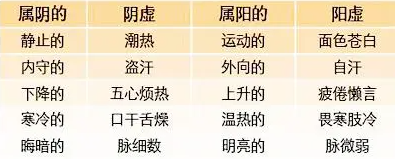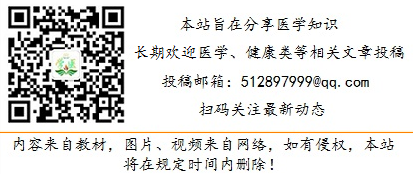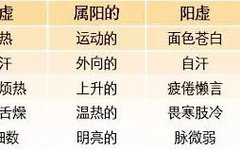 The occurrence and development of diseases fundamentally stem from the disruption of the relative balance of Yin and Yang in the body, resulting in an excess or deficiency of Yin and Yang. Therefore, adjusting Yin and Yang, reducing the excess, and replenishing the deficiency to restore the relative balance of Yin and Yang, thereby promoting the harmony of Yin and Yang, is one of the fundamental principles in treating diseases.
The occurrence and development of diseases fundamentally stem from the disruption of the relative balance of Yin and Yang in the body, resulting in an excess or deficiency of Yin and Yang. Therefore, adjusting Yin and Yang, reducing the excess, and replenishing the deficiency to restore the relative balance of Yin and Yang, thereby promoting the harmony of Yin and Yang, is one of the fundamental principles in treating diseases.

Reducing the Excess
Reducing the excess, also known as reducing the surplus, primarily addresses conditions where either Yin or Yang is excessively strong. The treatment method of “reducing the surplus” is applied. For example, in cases of Yang excess leading to heat (Shi Re), the method of clearing and draining Yang heat is used, following the principle of “treat heat with cold” or “cold for the hot,” to clear and drain Yang heat, treating the condition of Yang heat excess. Conversely, for Yin excess leading to cold (Shi Han), the method of warming and dispersing Yin cold is employed, adhering to the principle of “treat cold with heat” or “heat for the cold,” to warm and disperse Yin cold, treating the condition of Yin cold excess. In the process of disease where Yin and Yang are imbalanced, excessive Yang heat can easily damage Yin, while excessive Yin cold can harm Yang. Therefore, while reducing the surplus, attention should also be given to the corresponding deficiency; if “Yang excess leads to Yin disease,” the treatment should primarily focus on clearing heat and draining fire while also nourishing Yin; if “Yin excess leads to Yang disease,” the treatment should primarily focus on warming and dispersing Yin cold while also supporting Yang.
Replenishing the Deficiency
Replenishing the deficiency, also known as replenishing the insufficiency, primarily targets conditions where either Yin or Yang, or both, are deficient. The treatment method of “replenishing the insufficiency” is applied. Since diseases can be categorized into Yin deficiency, Yang deficiency, and both Yin and Yang deficiency, the treatment methods differ: nourishing Yin, replenishing Yang, or dual replenishment of Yin and Yang.1. Nourishing Yin to Control Yang, Supporting Yang to Control Yin Nourishing Yin to control Yang, or treating Yin for Yang disease, means “strengthening water to control Yang fire.” This is suitable for conditions of deficiency heat caused by insufficient Yin fluids and relatively excessive Yang heat, using herbs and formulas that nourish Yin fluids to restrain the relatively excessive Yang heat. Supporting Yang to control Yin, or treating Yang for Yin disease, means “benefiting the source of fire to dispel Yin shadows.” This is suitable for conditions of deficiency cold caused by insufficient Yang Qi and excessive Yin cold, using warming and Yang-replenishing herbs and formulas to eliminate the relatively excessive Yin.2. Seeking Yang within Yin, Seeking Yin within Yang According to the principle of the interdependence of Yin and Yang, seeking Yang within Yin refers to adding nourishing Yin herbs to Yang-replenishing formulas when treating Yang deficiency, meaning “Yang is supported by Yin and can generate endless transformations”; seeking Yin within Yang refers to adding Yang-replenishing herbs to Yin-nourishing formulas when treating Yin deficiency, meaning “Yin is supported by Yang and the source remains inexhaustible.”3. Dual Replenishment of Yin and Yang Based on the principle of the interdependence and transformation of Yin and Yang, in the later stages of chronic diseases, there may be conditions of dual deficiency of Yin and Yang, where treatment should involve dual replenishment of Yin and Yang. Additionally, due to the broad concept of Yin and Yang, treatment methods such as releasing the exterior and attacking the interior, raising clear Qi and lowering turbid Qi, warming and clearing, deficiency and excess tonification and draining, and harmonizing Ying and Wei also fall within the scope of adjusting Yin and Yang. The human body is an organic whole, where the organs (Zang and Fu) and their physiological interactions must coordinate with each other, and pathologically, they inevitably influence one another. The pathological changes of the organs are also affected by the balance of Yin and Yang. Therefore, when treating organ pathologies, adjustments should be made according to the Yin and Yang attributes of the organs and their pathological changes.
Electronic Textbooks
| Internal Medicine | External Medicine | Pediatrics |
| Diagnostics | Obstetrics and Gynecology (8th Edition) | Infectious Diseases |
| Types of Infectious Diseases | Symptoms and Signs | Practical Skills |
| Systemic Anatomy (8th Edition) | Regional Anatomy (8th Edition) | Neurology (9th Edition) |
| Emergency Management | Emergency and Disaster Medicine | Dermatology and Venereology |
Physiology (9th Edition) |
Obstetrics and Gynecology (9th Edition) | |
Basic Nursing Skills for Elderly Care Workers |
||
Guidelines for Elderly Care Practice |
 Traditional Chinese Medicine — Renwei 8th Edition
Traditional Chinese Medicine — Renwei 8th Edition

